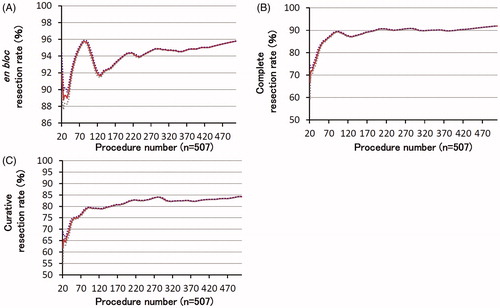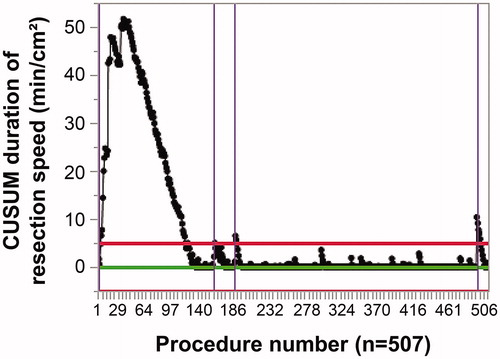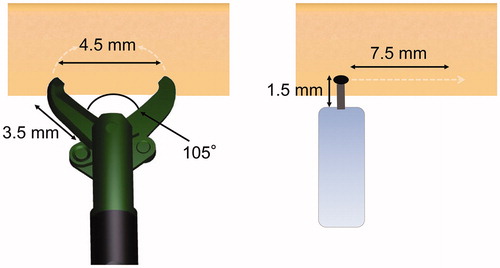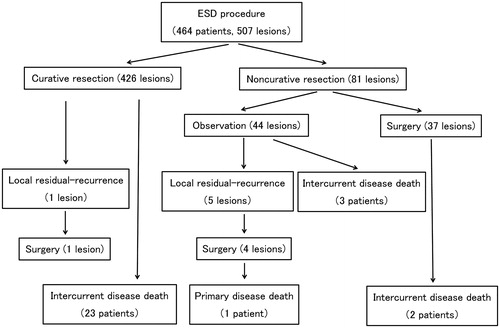Figures & data
Table 1. Baseline characteristics and procedure outcomes of all patients.
Figure 2. Learning curve for a satisfactory resection rate using moving average analysis. The purple and gray dotted line shows 95% CI. (A) Complete resection rate, (B) en bloc resection rate, and (C) curative resection rate. CI: confidence interval.

Figure 3. CUSUM resection speed (min/cm2) against procedure number. The red line shows the decision interval, whereas the purple line indicates the outlier. CUSUM: cumulative sum.

Table 2. Tumor and procedure characteristics among the three phases.
Figure 6. Schema for SB Knife Jr and the conventional tip-type knife. SB Knife Jr has a forceps length of 3.5 mm, an opening width of 4.5 mm, and an opening angle of 105°. Assuming a fan-shaped dissection surface, a single grasp and dissection action enables the clinician to cut approximately 11.2 mm2 of tissue. In contrast, assuming a rectangular dissection surface, the tip-type knife with a 1.5 mm forceps length requires a horizontal movement of approximately 7.5 mm to cut the same length of tissue. In the difficult-to-operate large intestine, these movements require advanced endoscopic techniques.




